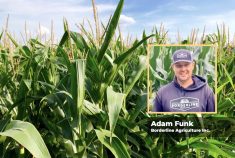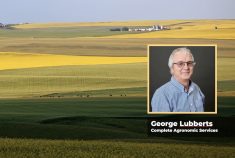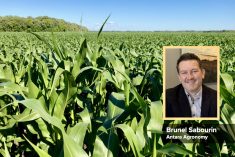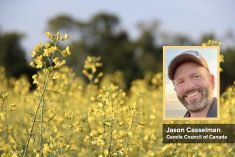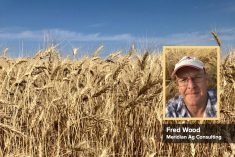Canola-based rotation systems can improve long-term sustainability by using less energy and storing carbon below the ground, but keeping them going on top is proving to be a challenge.
A study by Saskatchewan Research Council’s Susan MacWilliam, along with Agriculture and Agri-Food Canada research scientist Reynald Lemke and others, compared the impact of changing management and production practices on environmental stability and canola performance between 1990 and 2010. They found that environmental effects of producing one tonne of canola were reduced over that period.
“Over the past two decades, on-farm fuel use and fertilizer applied per tonne of canola decreased, which led to reduced greenhouse gas emissions and improved ecosystem quality,” they wrote.
Greenhouse gas (GHG) emissions from the production of a tonne of canola in the grey and black soil zones were reduced by 24 and 27 per cent, respectively, between 1990 and 2010 (results were mixed for the brown soil zone).
The researchers found more inputs were used over the two decades, but there were improvements in environmental performance per tonne of canola, in part due to increased yields.
There were also lower potential GHG emissions associated with the production and use of fertilizers.

Lemke says that for him, the most important metric for sustainability is carbon sequestration.
“Clearly there was an improvement — we were producing canola in 2010 with much less environmental impact. And the amount of land needed to grow every tonne of canola went down.”
In Western Canada, the crop mix has shifted from wheat-based to canola-based systems. In 1986, Canadian producers harvested 6.5 million acres of canola. By 2012, that figure broke the 20 million mark, and in 2019, it reached 21.3 million.
Lemke notes that producers started getting into canola around 1985-90 at the same time that a lot of other management shifts were underway.
“We were moving strongly into one-pass seeding, zero tillage and reduction of summerfallow. All of these things were concurrent, so it’s hard to tease out how much of that was a result of canola being introduced to the system. But certainly the advent of the hybrids and herbicide tolerance really pushed cropping intensity.”
Read Also
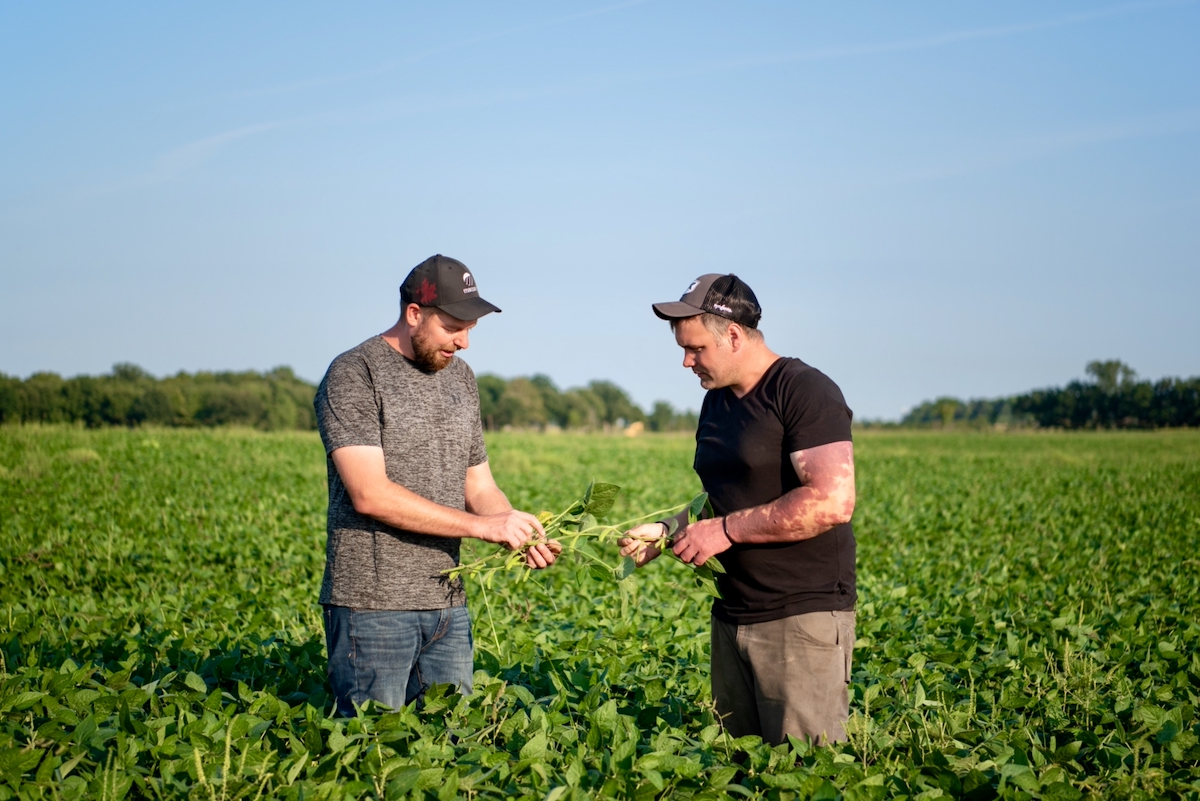
Ontario farmers partner for success
Ontario business partners, Matt Bergman and DJ Wassenaar, have been farming together for 10 years. Their focus on integrating unconventional…
Logistics trump agronomy
Any definition of sustainability must include economic stability, and canola offers a win-win for producers in terms of market returns and relative production simplicity, says Bill May, crop management agronomist and the lead on one of Canada’s longest-running studies for Agriculture and Agri-Food Canada at Indian Head, Sask.
May says some recent trends — the shift to canola, increased farm sizes and shortening rotations — are intertwined. Due to their larger operations, many producers are moving to simplify their management practices to cover off all their acres during the growing season, and this sometimes means logistics trump agronomy.
“Canola has been a valued addition to people’s rotations because it has herbicide-tolerance characteristics. That has slowed the development of herbicide-resistant weeds,” May says.
“It’s represented an economic advantage for producers because the crop can hit a home run when you get high yields and good prices. The disadvantage is that rotations are shortening. The big problem we’re seeing on the horizon is with farm sizes increasing; logistics can overrule agronomy.”
Clubroot is moving across Western Canada, and even though a two-year gap is required between crops to manage the soil-borne disease and maintain yield, many producers are still growing canola every other year. Shortened rotations mean disease resistance could start to break down in fields with heavy spore loads.
“What I’m hearing is that guys are depending on that clubroot resistance in cultivars and not extending the rotation. Some farmers are very good at extending the rotation, but other guys are not able to find an extended rotation that they think is economically sustainable,” May says.
“The drive toward simplicity leads people into shorter rotations that are going to have some negative impacts over time. Logistics have to be handled, and farmers want an economic return that supports their continued existence. All the benefits of a longer rotation suffer if the short-term objectives aren’t being met.”
Tech to the rescue?
What’s the solution? May says self-directed or auto-guided implements might help take the pressure off logistics and allow producers to improve management over a larger acreage. He adds that more research is also needed to explore the problems of tightening rotations.
Last year May added new rotations including wheat-canola, wheat-canola-soybeans and wheat-canola-oat-soybeans to the long-term plots at Indian Head to “bring the study into relevance.”
As part of this study, researchers will look at long-term carbon cycling, crop development, yield, biomass production and soil health.
Research scientist Mervin St. Luce is now the lead on the long-term study plots in Swift Current. One diversified study began in 2003 looking at a wheat-canola-field peas rotation.
St. Luce says data from the long-term plots is used for crop models that look at the effect of climate change on production systems, and how soil management affects long-term carbon sequestration.
This April, St. Luce began working on a data-management platform that will make all the protected data from the long-term plots available to the public.




